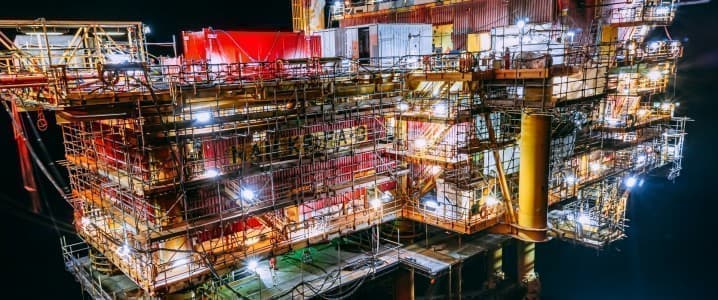Suriname Seeks Oil Prosperity Amid Challenges and Opportunities

As Suriname positions itself for potential oil prosperity, it finds itself in the spotlight alongside its neighbor, Guyana. The country’s offshore exploration efforts are gaining momentum, particularly at Block 58, where TotalEnergies and APA Corporation are leading developments. With production expected to commence in 2028, Suriname aims to establish itself as a significant player in the oil industry.
Guyana’s rapid ascent in the offshore oil sector began with ExxonMobil’s Liza-1 discovery in 2015 and subsequent production starting in 2019. Currently, output from the Stabroek Block exceeds 660,000 barrels per day (b/d), with reserves estimated between 11 billion and 13 billion barrels. This swift growth has led to substantial economic benefits, including improved infrastructure and increased public sector wages. Nevertheless, challenges remain, particularly in regulatory and technical capacities.
Suriname’s Exploration Landscape
Suriname shares a hydrocarbon-rich basin with Guyana, but its exploration efforts started later. Since 2020, focus has shifted to Block 58, where the Gran Morgu development is projected to yield between 200,000 and 220,000 b/d at peak production, with reserves estimated at around 700 million barrels. Staatsolie, Suriname’s state oil company, holds a 20% stake in this venture, which represents the country’s most advanced oil project to date.
While optimism surrounds Block 58, the situation at Block 59 has proven more complex. Following withdrawals by major operators such as ExxonMobil and Equinor due to exploration challenges, the block has been returned to Staatsolie. The geological conditions here are less favorable, as the area is located in some of the deepest frontier zones explored in the Atlantic Margin, with water depths ranging from 2,700 to over 3,500 meters. The risk of technical uncertainties and high drilling costs have made this block less attractive to investors.
Despite these setbacks, industry analysts maintain a cautiously optimistic outlook. Rystad Energy projects up to 10 wells will be drilled in Suriname’s offshore sector by the end of 2026. The potential for further discoveries remains significant, particularly in light of the investments being made in the Gran Morgu development, which are expected to total approximately $9-10 billion.
Challenges Ahead for Suriname
Suriname’s ambitions in the oil sector are not without hurdles. The country must develop its local capacity to handle the anticipated growth in the industry. Staatsolie has initiated training programs and partnerships with academic institutions to build a skilled workforce. Additionally, TotalEnergies is committed to supporting local supplier development, yet the challenges of scaling up engineering, logistics, and regulatory capabilities remain substantial.
The political landscape also plays a critical role. Following the May 2025 elections, the National Democratic Party (NDP) secured a narrow victory, appointing Jennifer Geerlings-Simons as the new president. Her administration has expressed continuity in energy policy while emphasizing social investment. However, Suriname has yet to establish a formal sovereign wealth fund or a long-term fiscal framework, which could hinder effective management of oil revenues. In contrast, Guyana has implemented structured mechanisms through its Natural Resource Fund Act and Local Content Act, providing a clearer path for managing its oil wealth.
As the year 2028 approaches, when Suriname expects to begin production from Gran Morgu, the country faces crucial decisions. The operational environment remains stable, but the relinquishment of Block 59 highlights the complexities of deepwater drilling. While Block 58 has yielded positive results, not all leads have developed into viable reserves, and the geological risk profile will continue to influence investment decisions.
In conclusion, Suriname is poised to carve out a competitive position in the regional oil landscape. Although it may not reach the production scale of Guyana in the near term, the next few years will be pivotal. Institutional readiness, infrastructure development, and public engagement will be essential in determining whether Suriname can fully realize its oil ambitions. The geological opportunities are present, but the success of these ventures will depend heavily on strategic choices made in Paramaribo.






